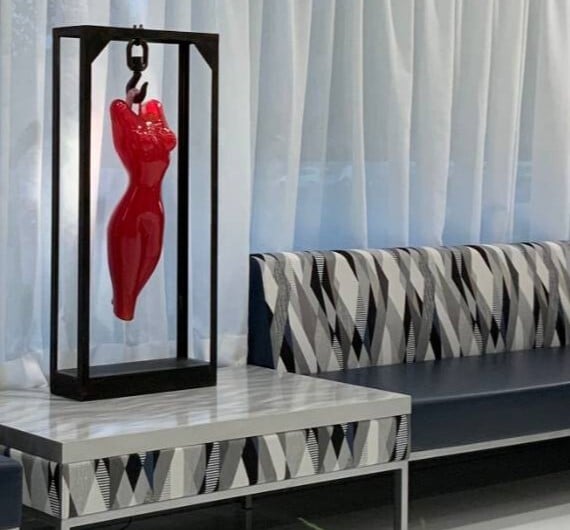Mastopexy may be performed in a hospital, an outpatient surgery center or a surgeon's office-based facility. It is usually performed on an outpatient basis under general anesthesia, and lasts from one half to one and one half hours, depending upon the technique required, and if any mesh is used as well. In all cases, breast lift surgery begins with administration of anesthesia or IV sedation. The surgeon makes the necessary incisions, and then lifts and reshapes the breast tissue into its new, rejuvenated contour. The nipple and areola are relocated higher on the breast and extra skin is removed around the perimeter if the areola is enlarged. Finally, the surgeon trims the excess breast skin that resulted from poor elasticity. Stitches layered deep throughout the breast tissue support the lifted breasts.
When the mastopexy is complete, the skin is closed with dissolveable stitches, and dressed with tissue adhesive and Brijjit clips. These self-stick plastic clips offload tension on the wound, yielding improved healing and less noticeable scars. Some of the incisions are hidden in the breast crease. Others will be visible. All scars will mature with time.
There are several ways to perform a breast lift. In my opinion, there is an optimal technique to utilize when performing a breast lift in any one given patient, but that specific technique will vary based upon the breast skin and parenchyma (fat and glandular tissue) characteristics as well as the desires of the patient. Years ago, I had a patient ask me if I perform a periareolar lift. The answer is yes, but it was not appropriate for this patient. Just because a minimal scar technique exists does not mean that it will be ideal for a specific patient.
Most breast lift techniques involve removal of skin and transposing (sliding) the nipple upwards. These techniques are predicated upon using skin that is already compromised to support the lift and maintain it. In situations where there is a fair amount of underlying parenchyma (glandular and fat tissue), the skin is completely elevated off the parenchyma and then sutures are placed into the parenchyma to reshape the breast tissue. The key thing to understand is that no type of surgery will improve the quality of the tissue. Tissue can be removed, rearranged, and tightened, but it cannot be made to be firm when it is loose. In some cases, additional bio-material can be added to provide additional soft tissue support. This will be discussed in the next section.
In all types of lift, the basic concepts are the same:
- Corrects the disparity in the skin brassiere envelope size versus the volume of glandular/fat contents
- Reposition the nipple/areola (also known as the "nipple-areolar complex" or NAC)
- Recruit skin from the lower inner and outer breast towards the midline of the breast to apply pressure to the breast against the chest wall, resulting in an elevation and reshaping of the breast tissue itself
The degree to which these tasks are achieved varies with each type of lift technique. It is best to think about the techniques as a continuum. The Periareolar technique performs these things to the least degree, then the Circumvertical is next and finally the Wise pattern lift performs these to the greatest degree. Each technique includes the technique before it, with the addition of greater recruitment of breast skin to be transposed (slid into position) and removed. Some one with the least amount of ptosis will require the least removal of skin, nipple repositioning and lift of breast parenchyma while someone with much greater ptosis will require a more aggressive procedure like the Wise pattern technique and of course there is the Circumvertical technique for the in-between patient. This is where thirty years of experience comes into play. The surgeons goal is to achieve the desired result in the least invasive way possible.
Periareolar (Around the areola)
This technique is for a breast with the least amount of ptosis, essentially the nipple/areola only needs to be elevated. The scar is completely around the areola. There is a variant of the technique called a "Crescent lift" which I almost never use. This involves a scar across only the upper half of the areola. The idea is to elevate the areola when there is only very minimal drooping of the areola. The reality is that it usually just results in vertical stretching of the areola and turns a round areola into an oval areola with no real elevation of the bottom of the areola, which is what is needed.
The important thing to understand about a periareolar lift is that the tension on the scar is perpendicular to that scar and in this case will result in a continual force exerted on the entire repair trying to expand the circle of the repair. This will result in dilation (expansion) of the circular scar with gradual enlargement of the size of the areola over the next several months. This expansion can become quite significant and result in a very poor aesthetic outcome.
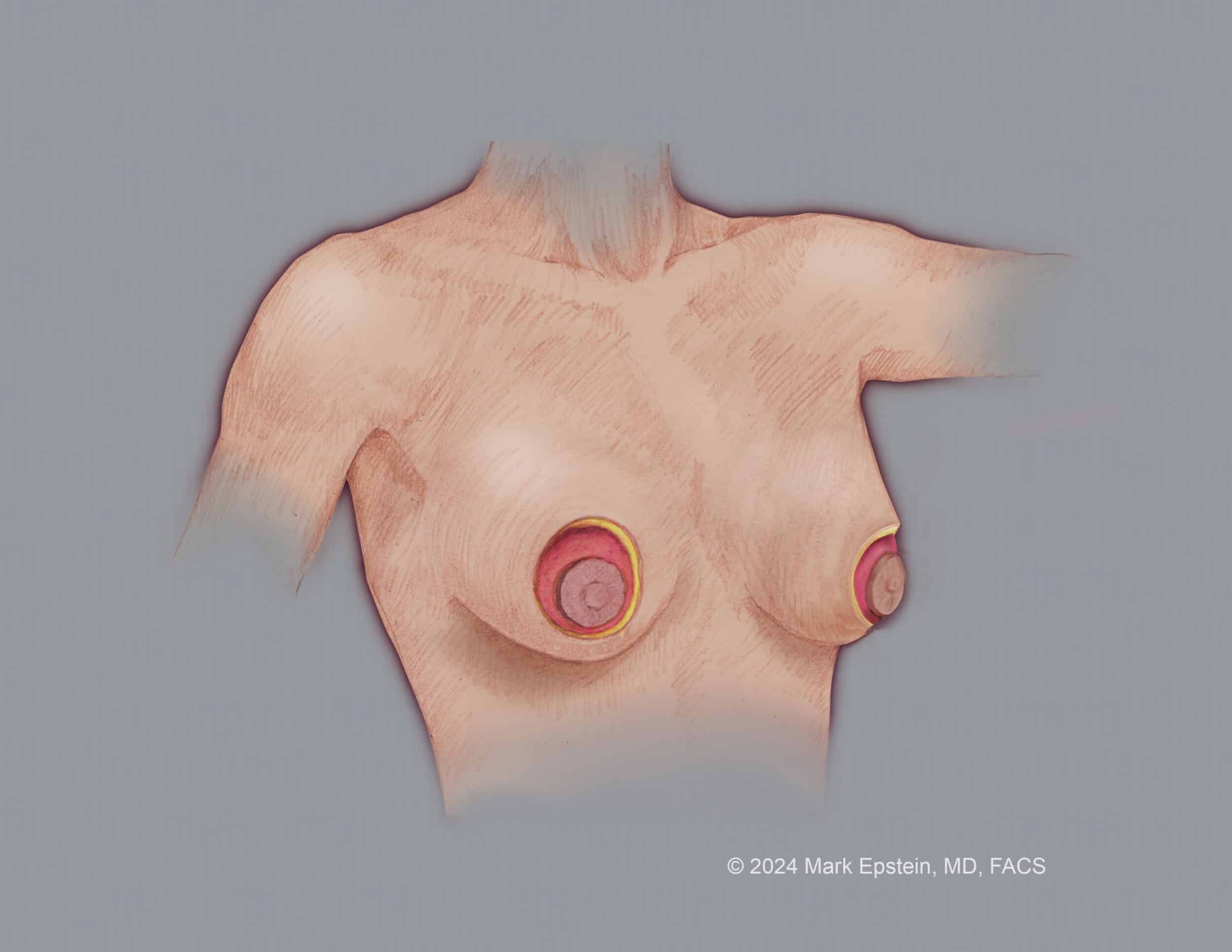
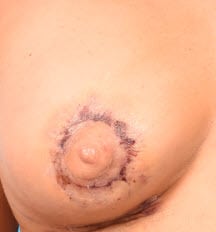
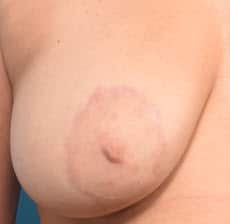
The above photos demonstration areolar expansion. The left photo was taken immediately after surgery, and the right photo was taken a few months later.
There is a way to prevent this from happening. A pursestring suture (like the string you pull to close a cloth change purse) is placed around the perimeter of the areola. It is preferred to use a suture that either takes a long time to absorb, or even better, one that never absorbs (dissolves). I perfer to use Goretex sutures which are specially made for me for this exact purpose. Goretex is strong, not absorbed and is not felt by the patient. The strong circular string resists the radial forces on the scar and will prevent areolar expansion.
This is shown in the below illustration and in the case below the illustration.
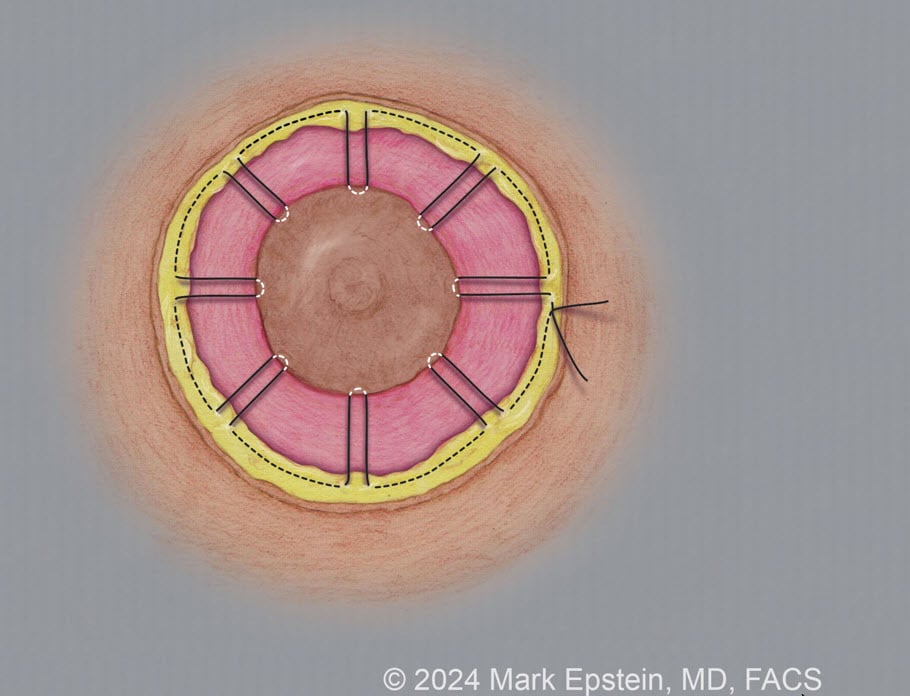
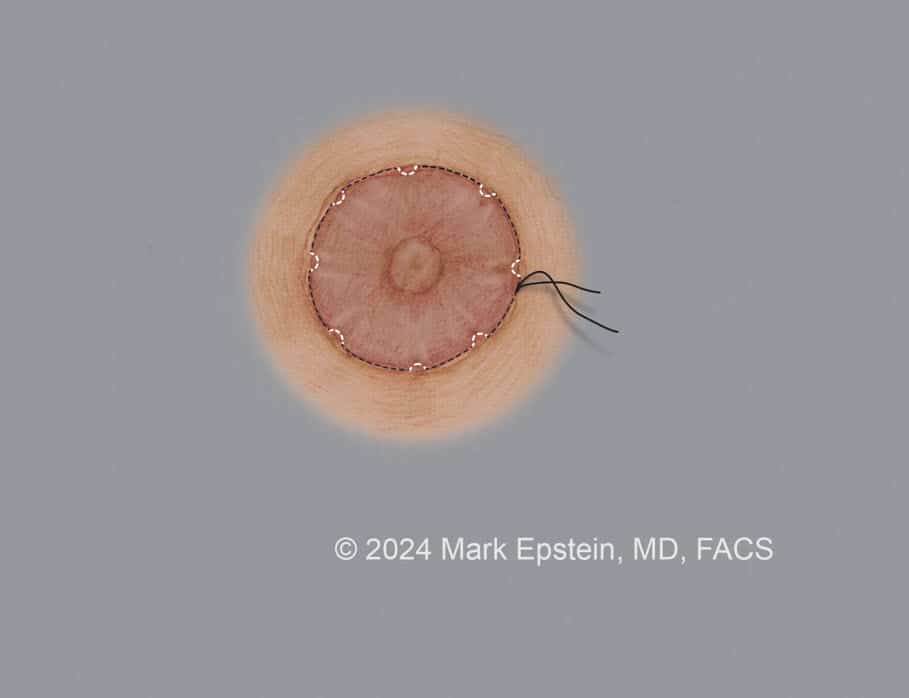
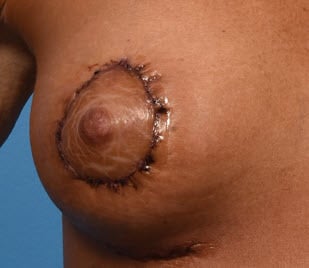
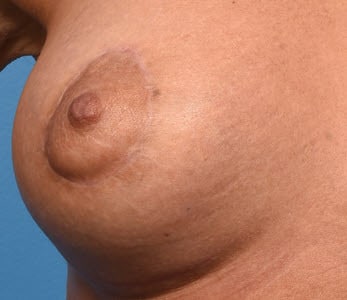
The above photos demonstration prevention of areolar expansion using a GoreTex periareolar suture. The left photo was taken immediately after surgery, and the right photo was taken a few months later.
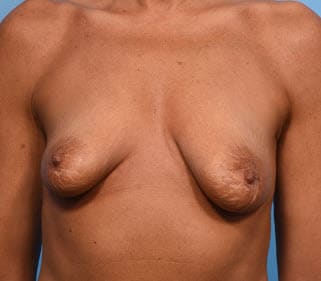
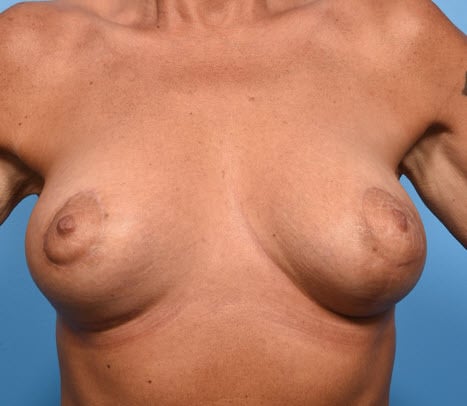
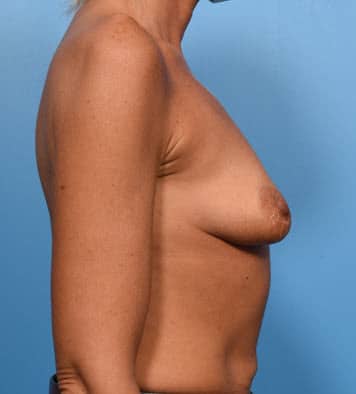
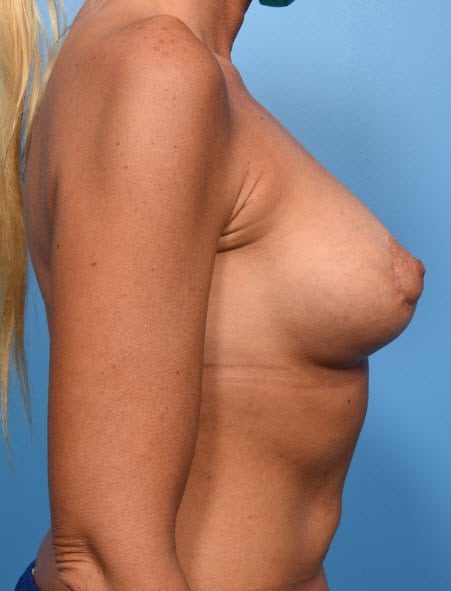
Above are the front and side photos for the same patient (Implant and Right Periareolar, Left Circumvertical Mastopexy (Lift):
Circumvertical ("Lollipop")
This technique is required when there is more ptosis of the nipple ("true Ptosis") and there is also ptosis of the glandular and fat tissue inside the breast ("false ptosis"). Many times, a small amount of the lower breast tissue is removed at the same time as this tissue has nowhere to go that will help us. Sometimes it can be freed up and tucked under the breast, which is a form of an "auto-augmentation." The decision to do this depends upon the amount of tissue and the shape of the breast. Most times, it is removed as there is often not enough tissue to really add to an auto-augmentation. The skin excision includes the periareolar excision as described above, but also with some skin on either side of the verticle midline of the lower breast below the areola. This allows breast and skin from the inner lower breast to move more laterally, as well as breast and skin from the lateral lower breast to move more medially. This tightens up the lower breast and even compresses the central breast, forcing it to move upwards. The distribution of tissue tension on the areola in this type of lift is different from that of the periareolar lift. Bringing the inner and outer lower breast together below the areola in the circumvertical lift prevents the radial tension on the areola that is seen in the periareolar lift, thereby eliminating the need for the pursestring suture. Areolar expansion with this type of lift is generally not seen.
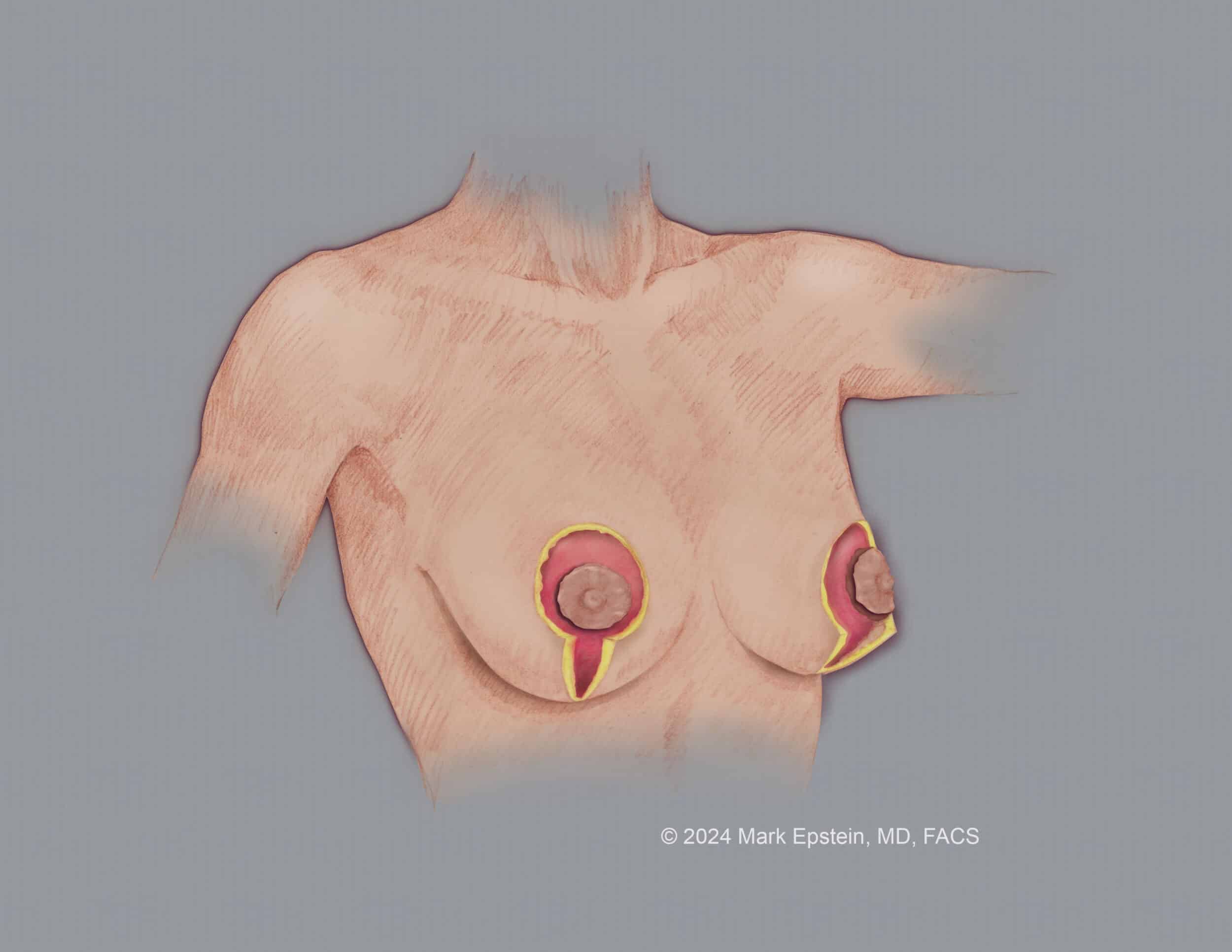
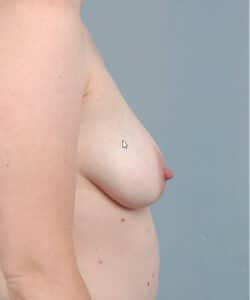
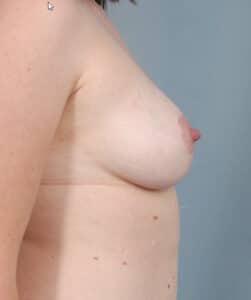
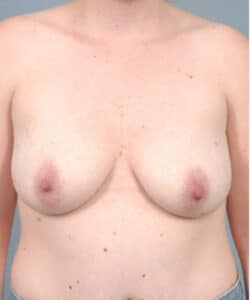
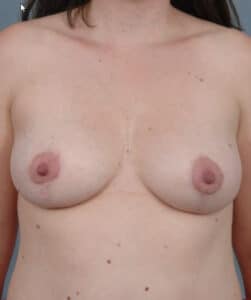
The above photos demonstrate a patient who underwent a circumvertical mastopexy (lift) without implants.
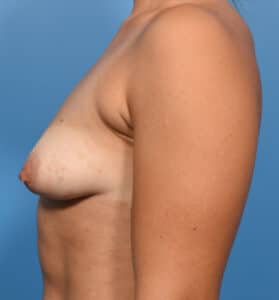
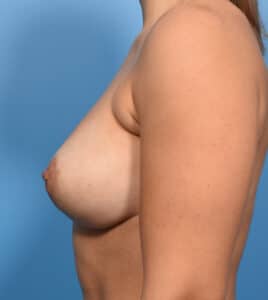
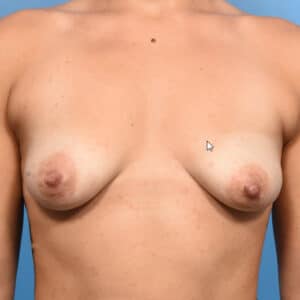
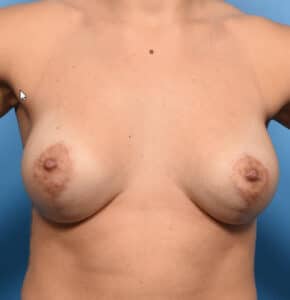
The above photos demonstrate a patient who underwent a circumvertical mastopexy (lift) with implants.
Wise pattern ("Anchor")
As stated earlier, the different techniques in breast lifting are essentially a continuum from the least amount of skin removal and nipple repositioning to the greatest amount. The Wise pattern lift is for patients with too much excess lower breast skin and parenchyma (glandular and fatty tissue), and too great a need for elevation of the nipple for the the circumvertical lift to achieve the desired result.
In this lift, the scar pattern includes the cricumvertical lift (periareolar and vertical lower breast scar) but now with the addition of a scar in the lower breast crease. What this additional scar does is afford the surgeon the ability to elevate the inner and outer lower breast skin to a greater degree, and even continue that elevation up to and even completely around the areola. The breast can even be compeltely "degloved" which means that all the skin is elevated off the breast, exposing the breast gland and fatty tissue. When this is done, usually in the more extreme cases, the surgeon now has the oportunity to place sutures into the breast to reform the shape of the breast mound, add suspension sutures above the breast to assist in elevation of the breast mound, and add additional soft tissue support to the lower breast. This will be addressed in the next section.
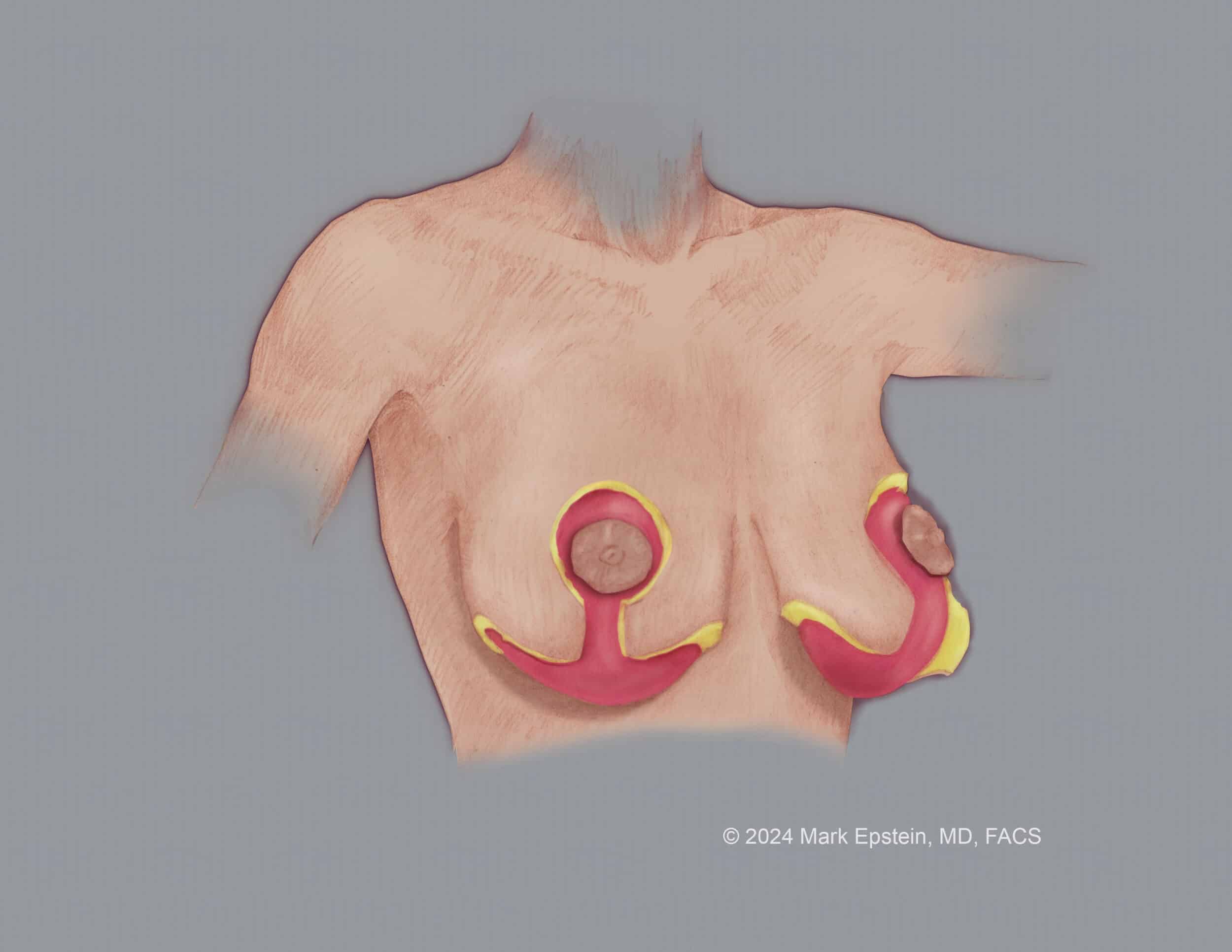
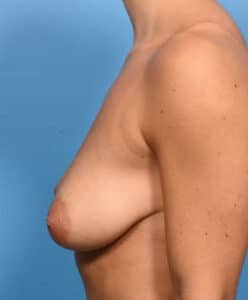
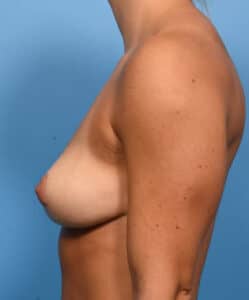
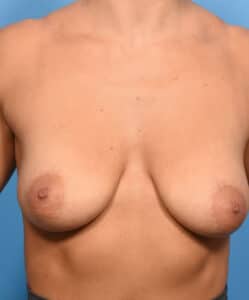
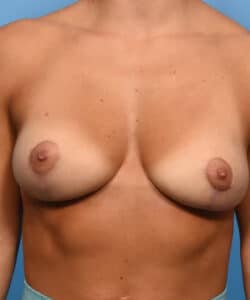
The above photos demonstrate a patient who underwent a circumvertical mastopexy (lift) without implants. GalaFlex was used for soft tissue support of the lower breast.


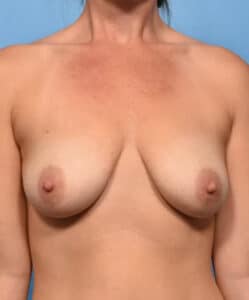

The above photos demonstrate a patient who underwent a circumvertical mastopexy (lift) with implants. GalaFlex was used for soft tissue support of the lower breast.
Breast Lift and Breast Firmness
It is important to understand that a breast lift will not change the quality of your tissues; rather it will remove excess skin and allow the breasts to attain a better shape. If your tissue is of poor quality, with little firmness, that will not change after any type of surgery.
Prev Section: Why might I need a breast lift? »
Next Section: The use of soft tissue support in breast lifts »
SECTIONS - Breast Lift/Mastopexy with Implants
Chapters - Breast Augmentation Guide
- Intro to Breast Augmentation
- Motiva Breast Implants
- Five key decisions you need to make
- One-Day Recovery Breast Augmentation
- Anesthesia – General, Sedation or Local?
- Breast Lift (Mastopexy) with/without Implants or Fat
- What else should I know about breast augmentation?
- Important Things to Consider When You Decide to Move Forward With Breast Augmentation
- Revision of breast augmentation
- ALCL and Breast Implant Illness


